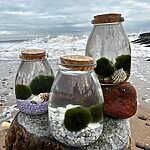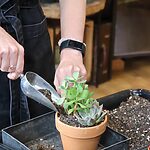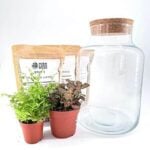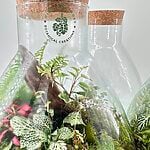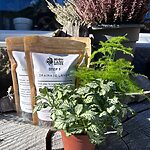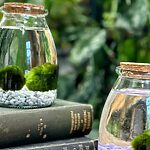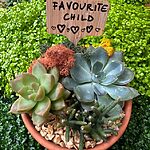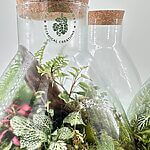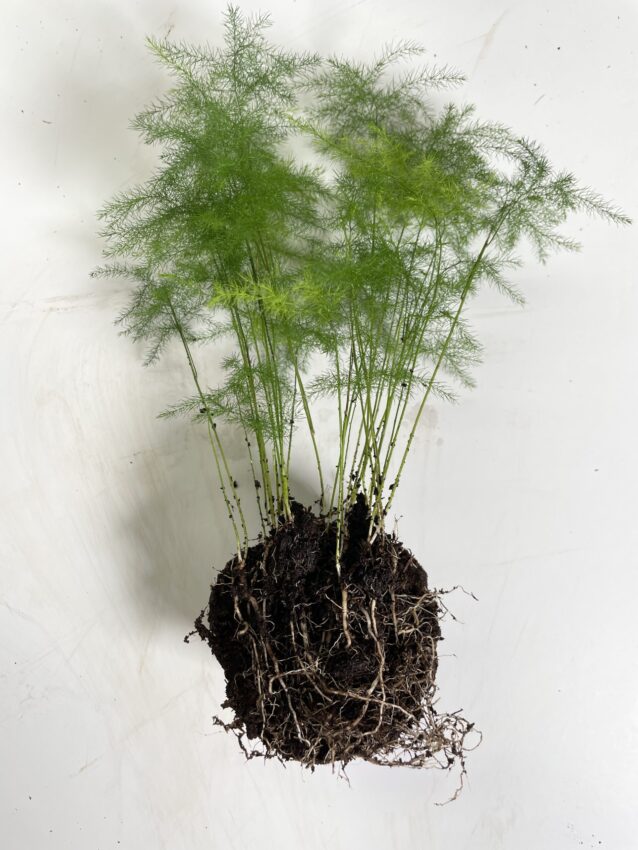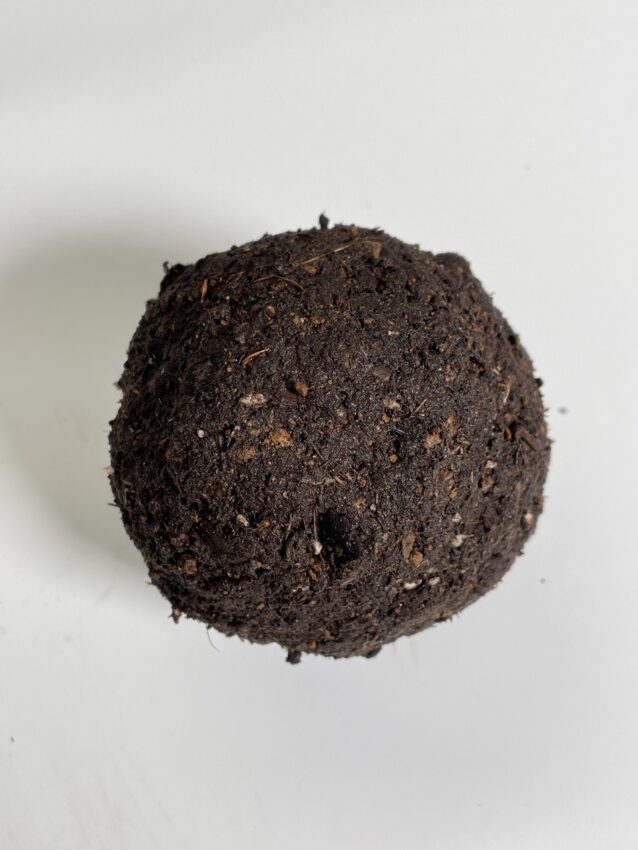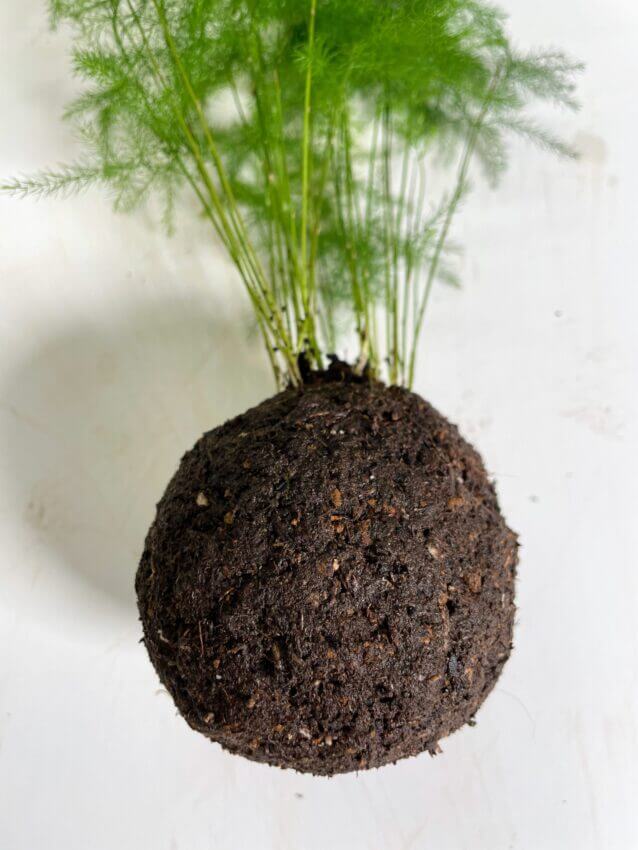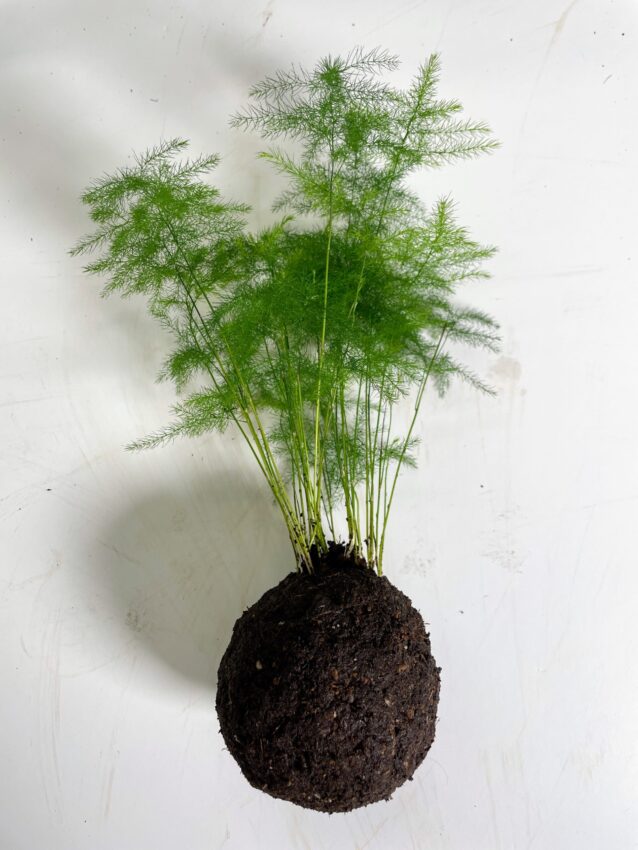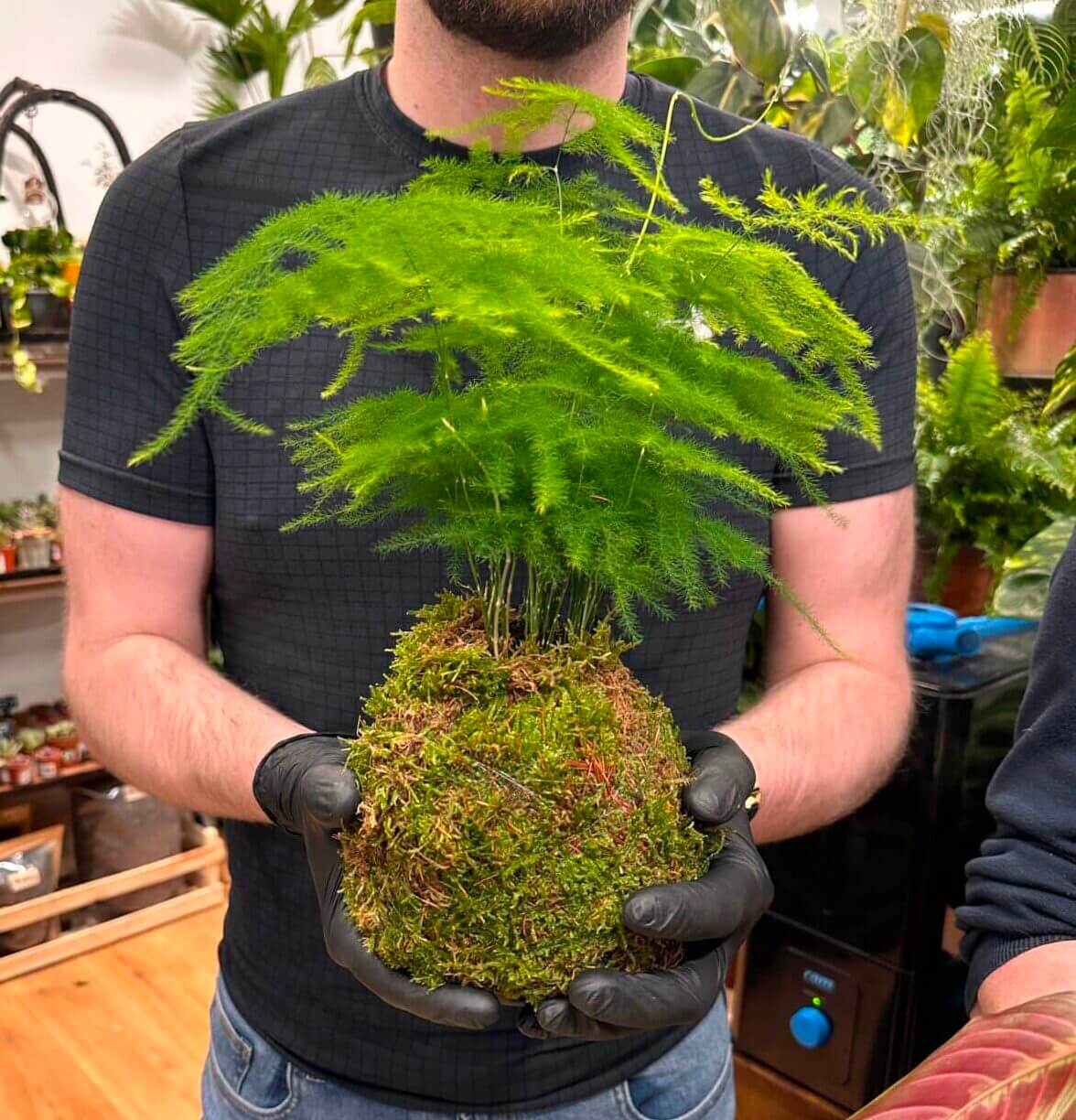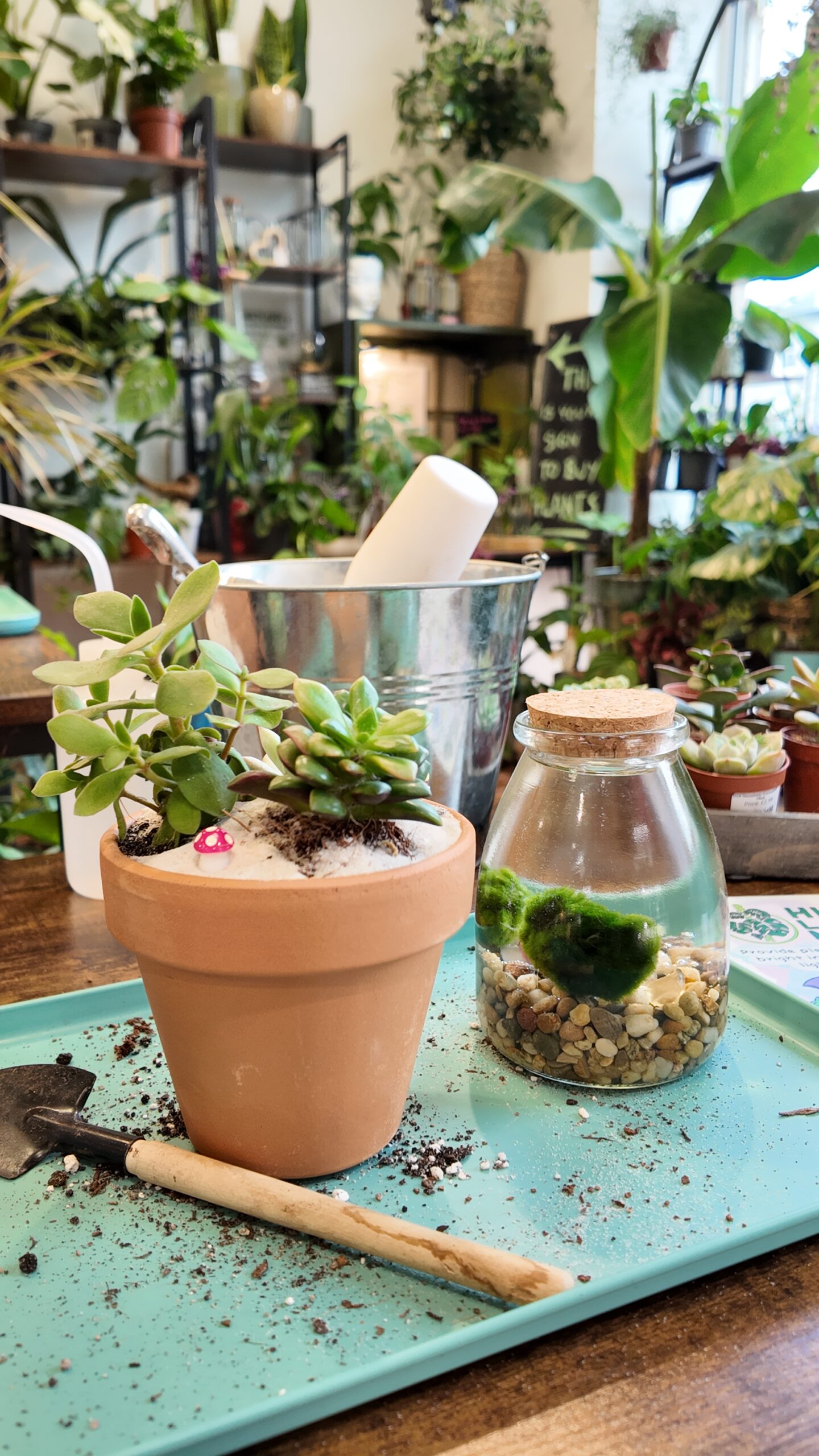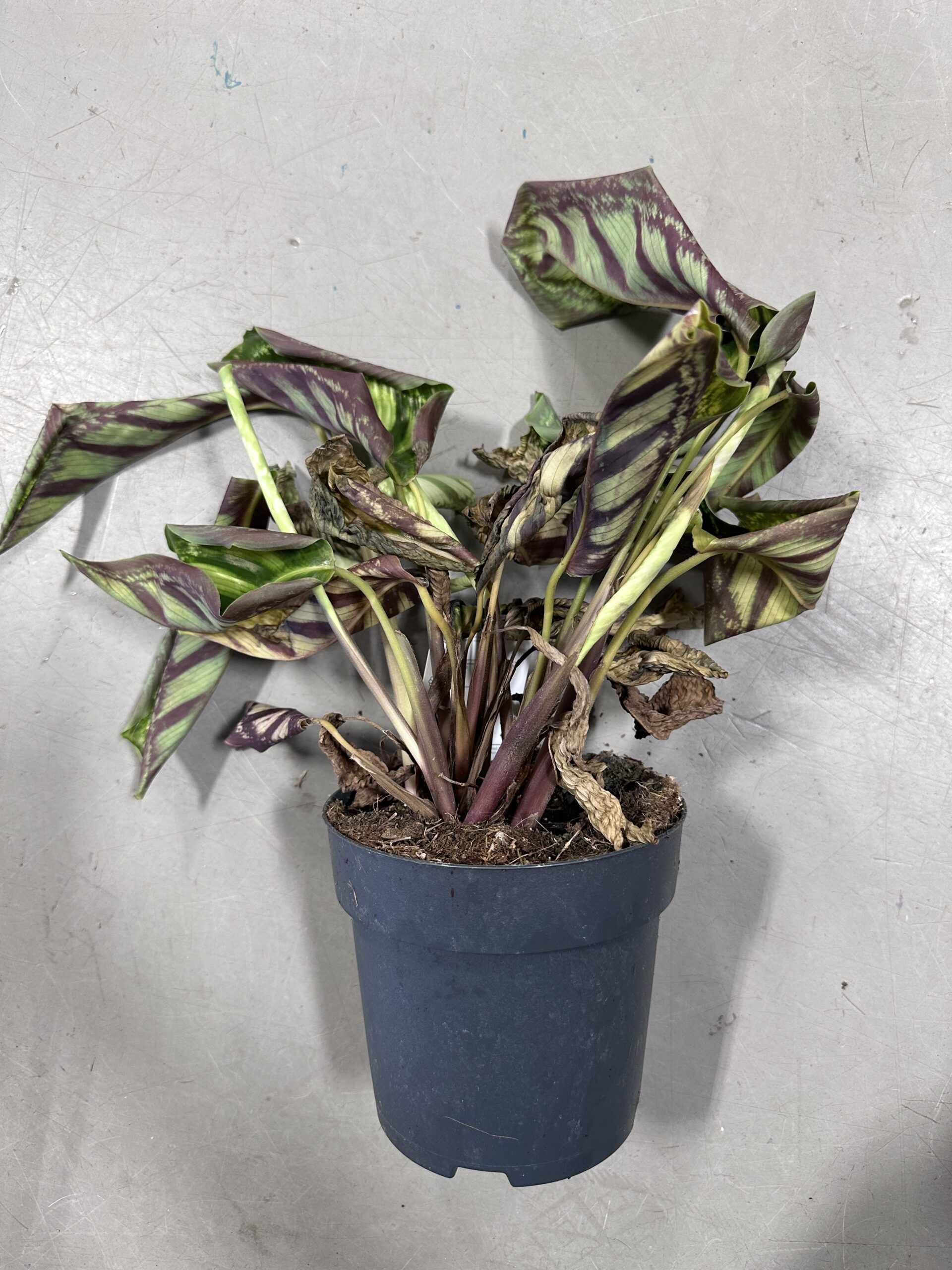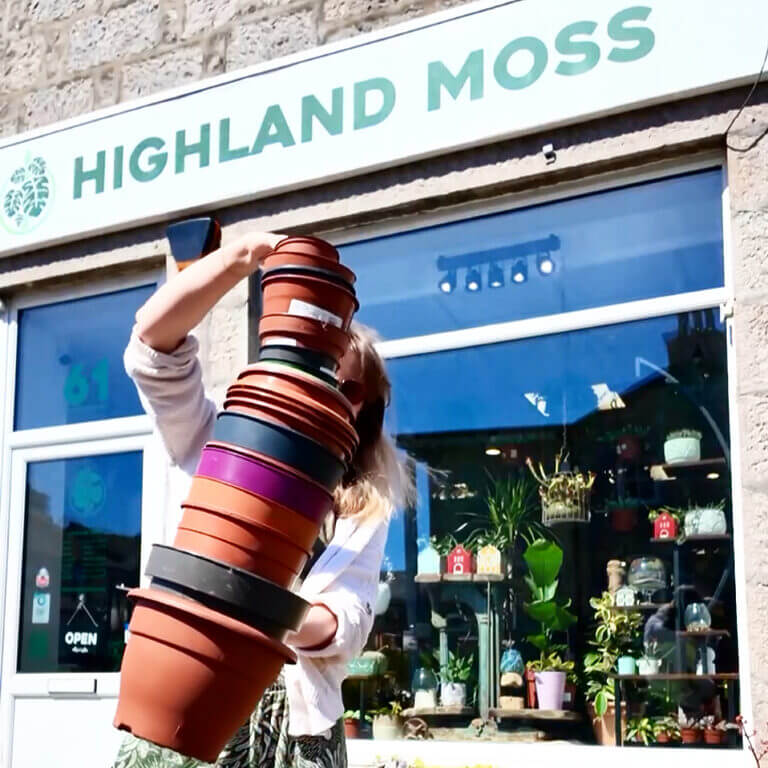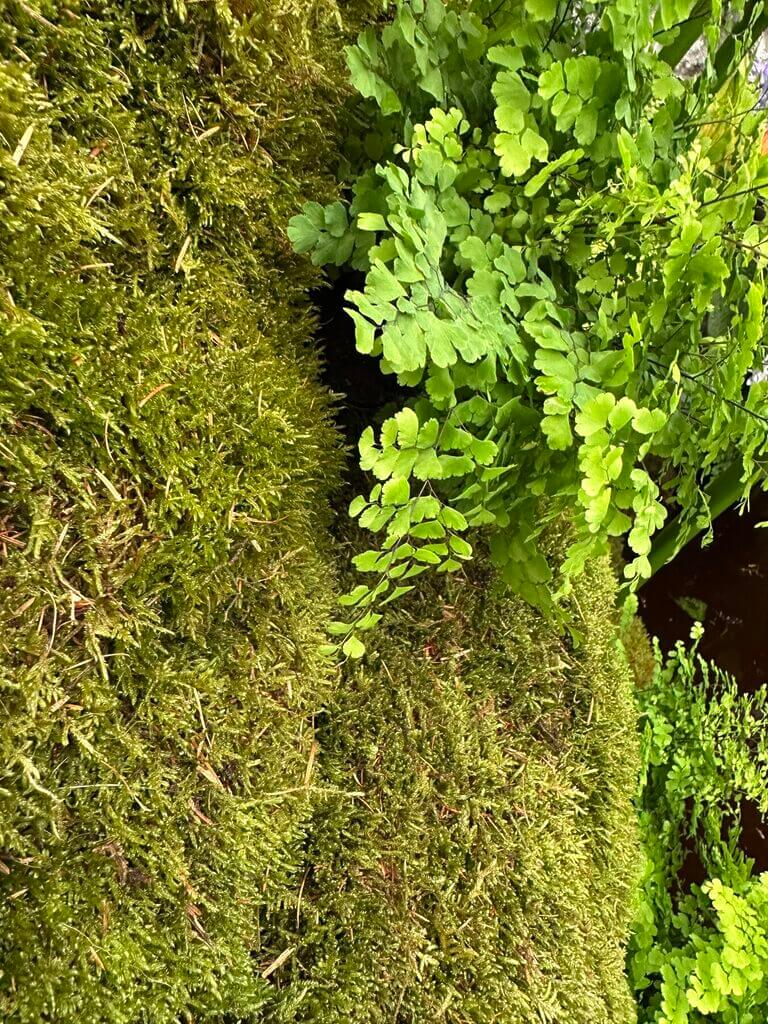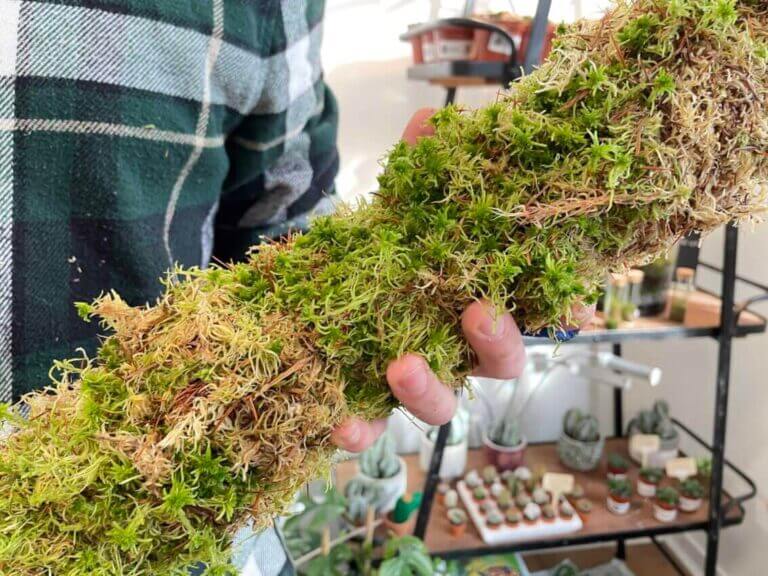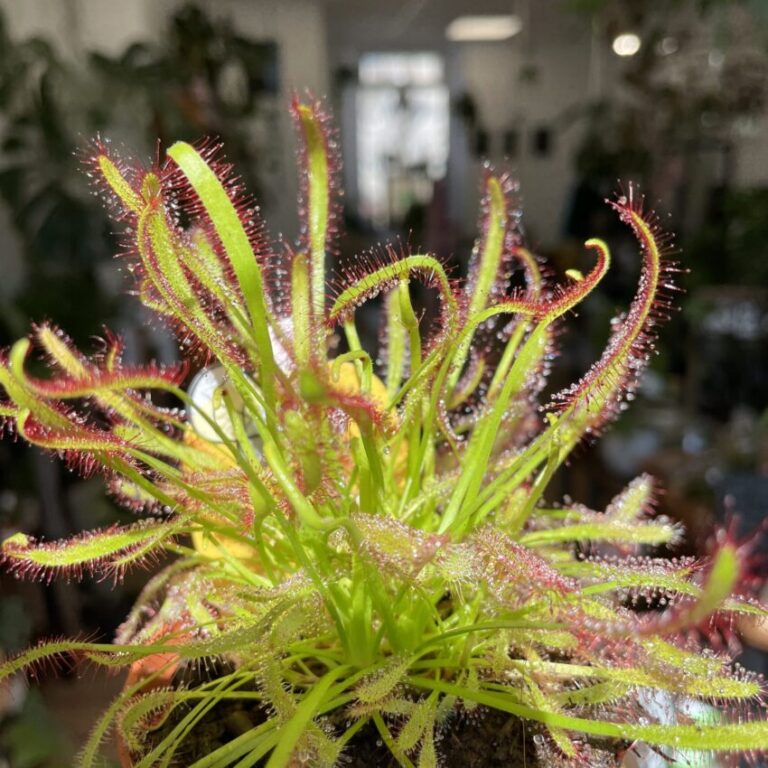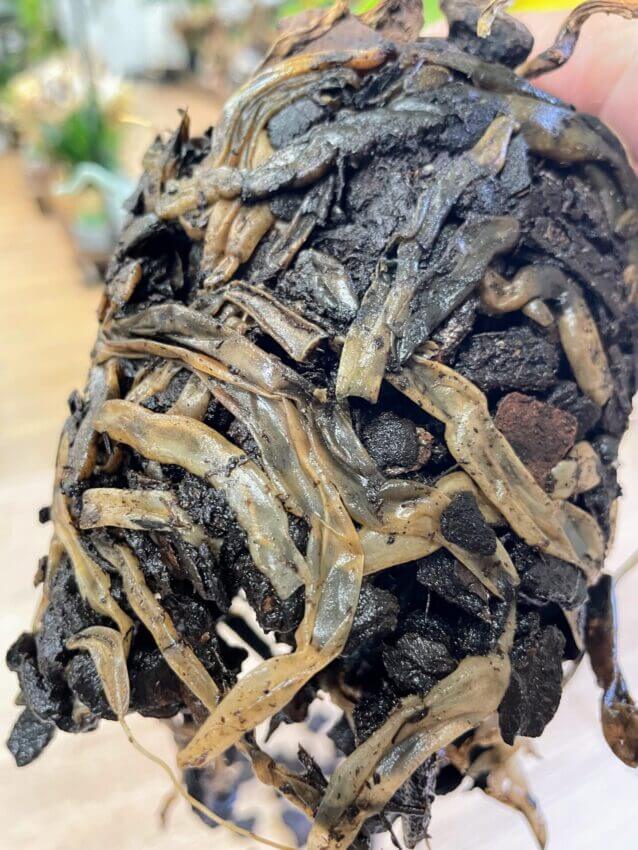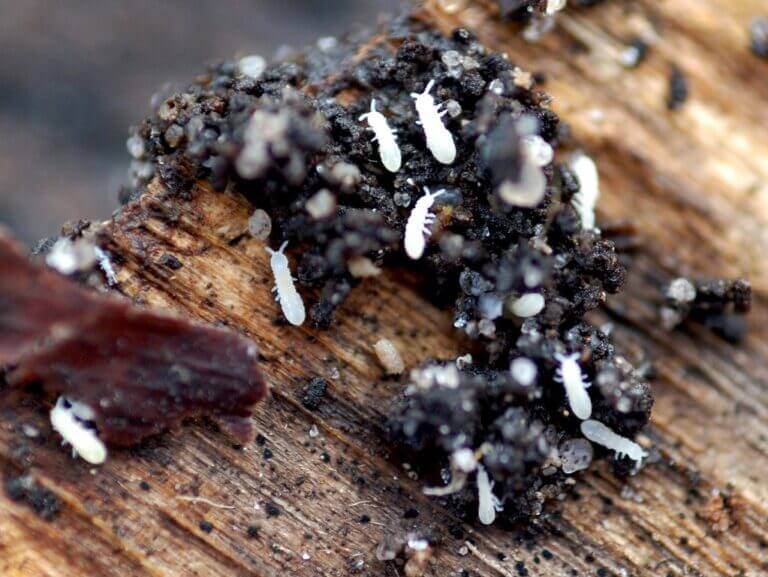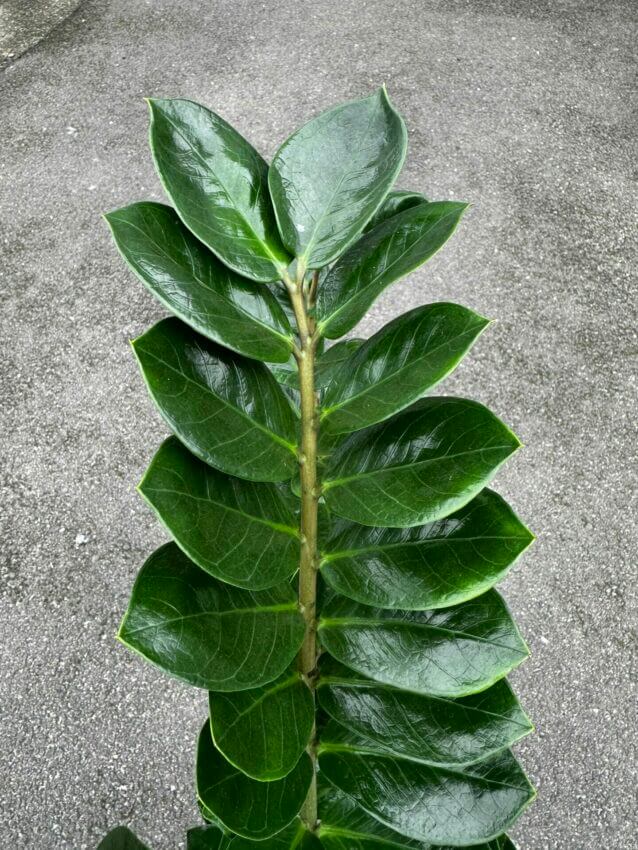Looking for a creative way to display your houseplants? Kokedama, meaning “moss ball” in Japanese, is a beautiful, natural technique that transforms a plant into a living sculpture. At Highland Moss, we offer everything you need to make your own — from handmade kokedama kits to workshops and private sessions, all using peat-free soil and sustainably sourced moss featured at RHS Chelsea Flower Show, BBC Gardeners’ World, and other top UK garden shows.
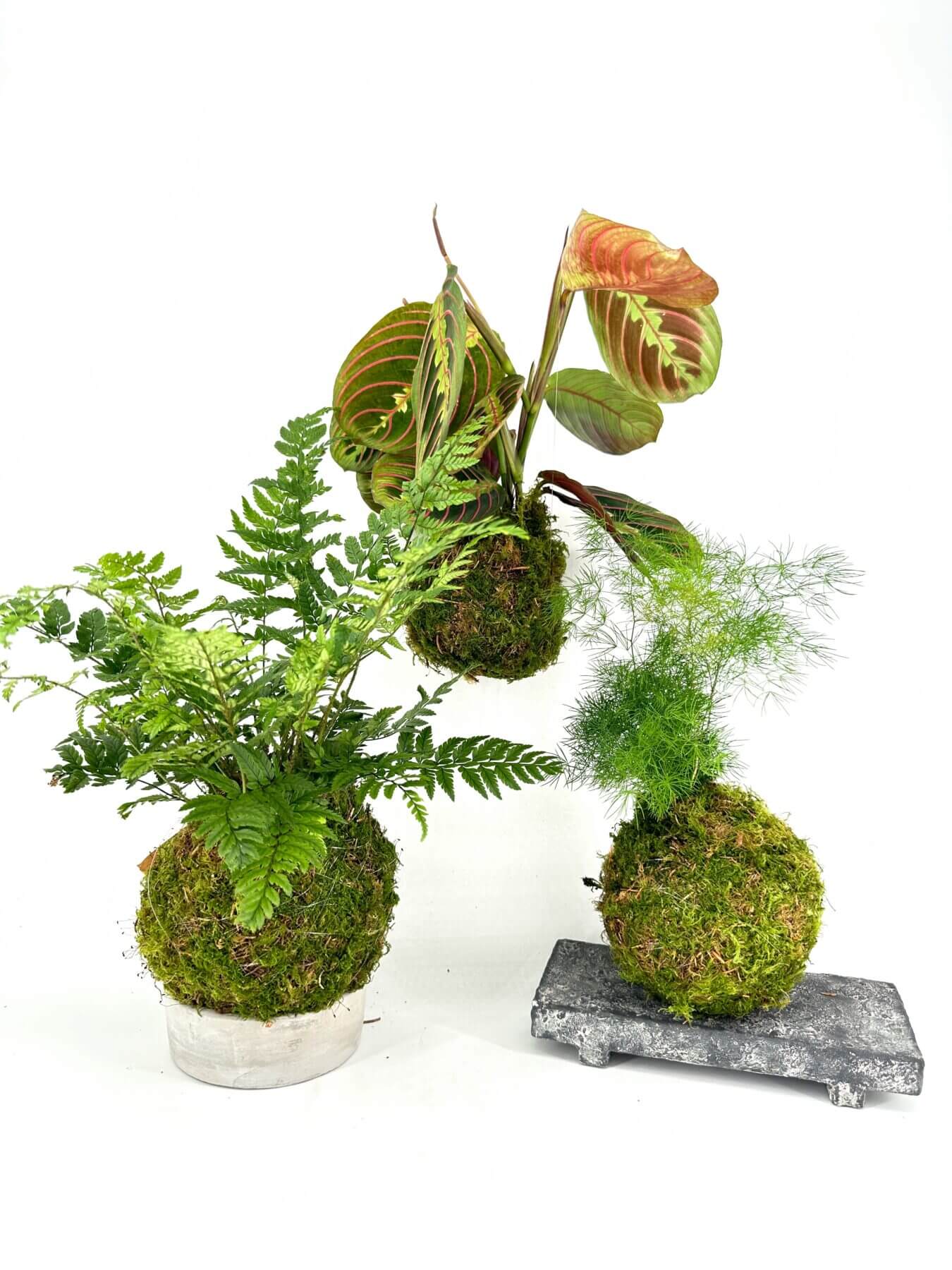
What is Kokedama?
Kokedama is a traditional Japanese method of growing plants that have recently become more popular and taken over home decor and plant-related social media. Many people admire those moss balls with plants because of their unique and stylish appearance.
Creating kokedama involves wrapping the roots of a plant in potting mix shaped into a ball and then covered in moss to create a unique ball shape, sustainable container for the plants. The word “kokedama” literally translates to “moss ball” in Japanese and is closely related to bonsai art.
The beautiful, lush ball of moss holds your plant, creating an interesting and visually appealing way to display plants in the home or workplace. Kokedama can be also used in SPA rooms, Yoga studios and beauty therapy salons to bring calming atmosphere. , whether suspended from the ceiling or resting on a dish, will bring a calming ambience to any room. Kokedama can be presented in two ways, either hanging from the ceiling or placed in a dish. Fishing wire can be used to hang kokedama and create the optical illusion of levitating plants.

What You Need to Make a Kokedama
To create your own kokedama, you’ll need:
- Kokedama soil – Our handmade, peat-free mix includes responsibly sourced sphagnum moss and other premium ingredients.
- Fresh moss – We use Scottish carpet or feather moss for most houseplants, and sphagnum moss for orchids.
- Plant of your choice – See below for the best options.
- Fishing line or nylon thread – To wrap and secure the moss.
- Jute string or macrame – For hanging or decorating.
- Scissors – For trimming string and moss.
- Bowl or dish – To mix the soil and soak your kokedama.
- Water – Essential for mixing and maintenance.
All of these are included in our Kokedama DIY Kits, available in two sizes and suitable for small or medium houseplants.
Step-by-Step: How to Make a Kokedama
- Mix the soil: Add water to the kokedama mix until it sticks together.
- Prepare the plant: Gently remove the plant from its pot and loosen excess soil from the roots.
- Form the soil ball: Shape the wet soil around the roots into a firm ball.
- Wrap with moss: Press moss around the ball, covering it completely.
- Secure with thread: Wrap tightly with fishing line or nylon thread to hold the moss in place.
- Add jute or macramé: Optional, but great for hanging or decoration.
- Display and enjoy: Hang in a bright spot with indirect light or place on a dish.
Every kit from Highland Moss includes full step-by-step printed instructions and a QR code linking to care tips.
Best Plants for Kokedama
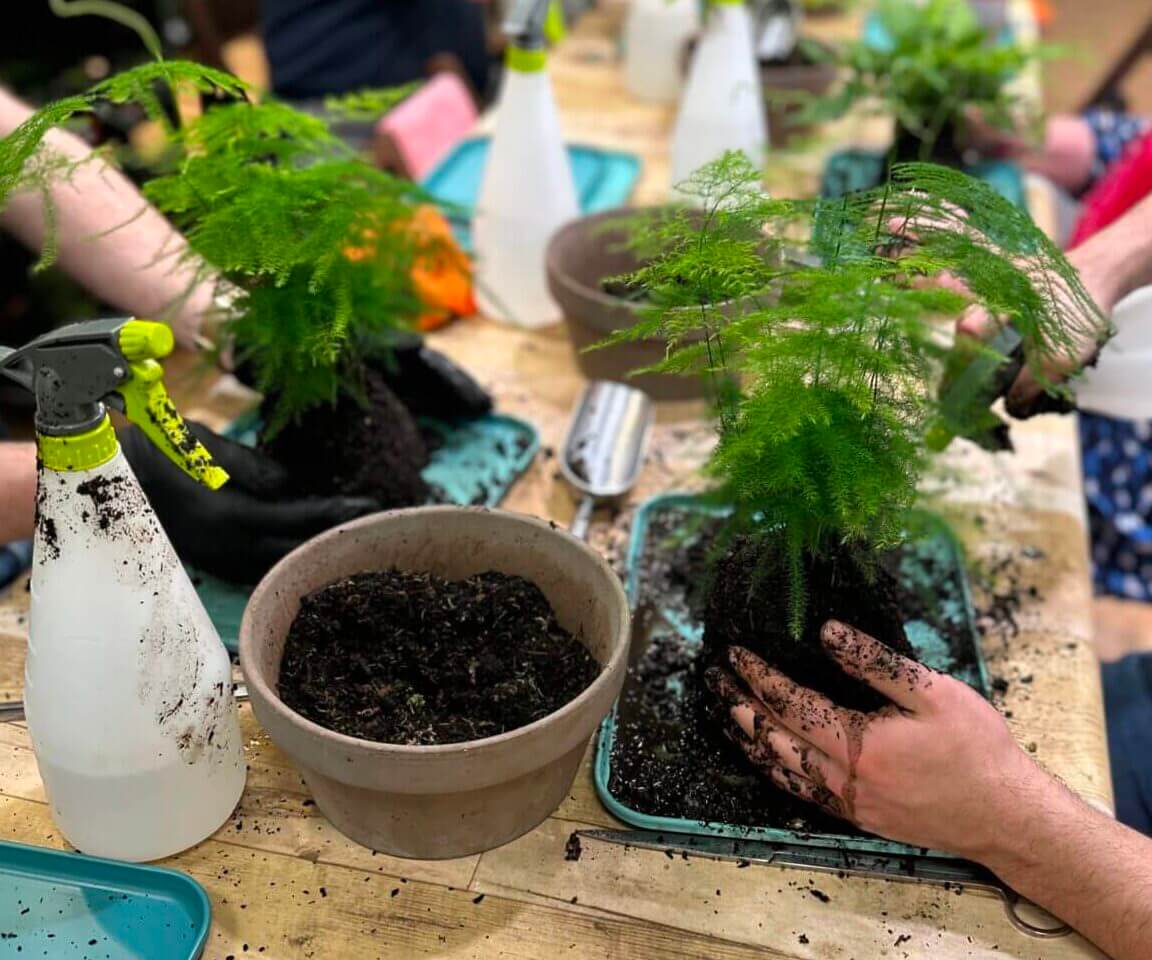
Choose plants that enjoy consistent moisture and moderate to bright indirect light. Ideal kokedama plants include:
- Fittonia (Nerve Plant)
- Hypoestes (Polka Dot Plant)
- Ficus Ginseng
- Spider Plant
- Peperomia (e.g., caperata, obtusifolia)
- Calathea, Maranta
- Peace Lily
- Pilea peperomioides
- Orchids (Phalaenopsis, with sphagnum moss)
- Philodendron scandens
- Scindapsus pictus (Satin Pothos)
- Asparagus Fern, Blue Star Fern, Boston Fern
Pet-friendly options include Calathea, Maranta, Fittonia, and Spider Plant.
Plants Not Suitable for Kokedama
Some plants are best avoided in kokedama due to their dry-soil needs:
- Succulents and cacti – Overwatering risk and moss dries out too fast.
- ZZ Plant, Snake Plant, and String of Pearls – Prefer dry, well-drained soil and bright sun.
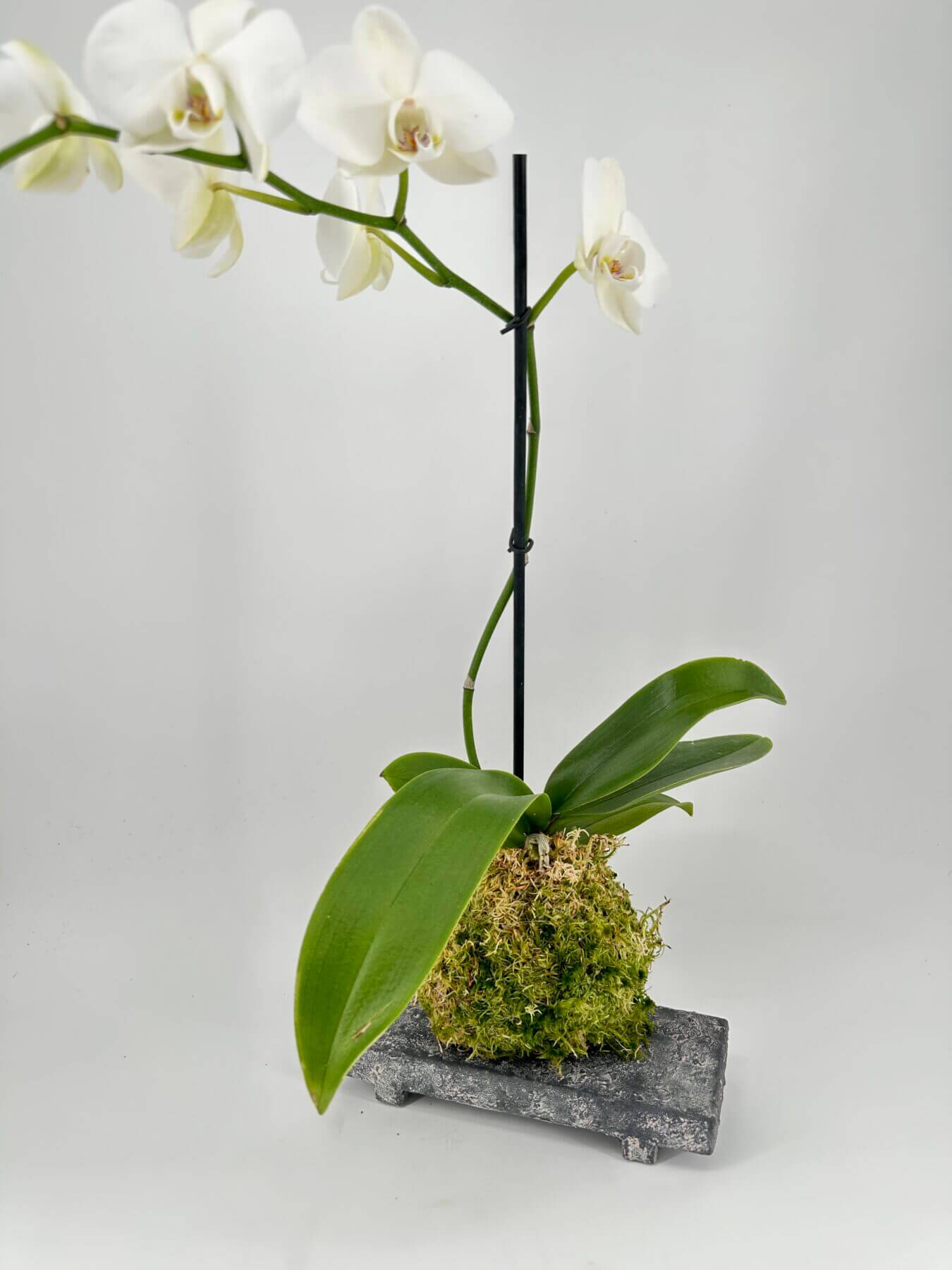
Ready to try it yourself? Whether you’re crafting at home or joining a workshop, kokedama is a fun, meditative way to bring nature indoors.
Explore our DIY kits, handmade kokedama, and upcoming classes on HighlandMoss.com
Highland Moss Kits, Handmade Kokedama & Workshops
We offer:
- Kokedama DIY Kits – Everything you need, including peat-free soil, moss, string, care guide, and instructions.
- Handmade Kokedama – Pre-made by our team using lush plants and high-quality moss.
- In-person Workshops – Learn the craft with expert guidance at our Aberdeen shop.
- Private Bookings – Great for birthdays, groups, or creative team-building activities.
Every kokedama made or sold by Highland Moss includes our signature moss — hand-collected in Scotland and trusted by top designers at Chelsea Flower Show.
Looking For More Knowledge
If you’re looking for more information on how to care for your plants, be sure to check out our other articles on plant care. We have articles on a wide range of topics, including how to treat common pests, how to choose the right soil and fertilizers, and how to propagate your plants. Our articles are packed with useful tips and information that can help you get the most out of your plants. Whether you’re a serial plant killer, a beginner or have your own lush jungle, there’s something for everyone. So take a look and see what you can learn!
-
Fun Kids Plant Workshops in Aberdeen – Indoor Gardening Activities at Highland Moss
Welcome to our Wee Workshops – a series of fun, educational, plant-based activities for children (aged ~4+). These are perfect for birthday parties, small group events (e.g. playgroups, afterschool clubs), or family outings. Each child leaves with their own botanical creation and a simple illustrated…
-
Results of our 2025 Customer Survey
What You Told Us: Key Takeaways from the Highland Moss Customer Survey At Highland Moss, we’re all about growing. That includes our plants, our community, and the way we do things. So earlier this year, we asked you to take part in a short survey…
-
How to Save a Dying Indoor Plant: Step-by-Step Rescue Guide
Step-by-Step Rescue Guide Not every plant starts its life in the best conditions Many houseplants from supermarkets or garden centres suffer from poor care long before reaching your home. Some are cold-damaged from sitting by shop doors, others may be overwatered by staff without proper…
-
Free Plant Pots at Highland Moss – Sustainable Project
Take a Pot, Leave a Pot: Eco-Friendly Plant Pot Reuse Scheme in Aberdeen, Scotland Free Plant Pots at Highland Moss At Highland Moss in Aberdeen, we’ve launched a simple and sustainable initiative to help reduce plastic waste while supporting our local plant community. Our Take…
-
Moss: From RHS Chelsea Flower Show to Your Garden
Moss takes the spotlight: What an incredible week at RHS Chelsea Flower Show 2025 – moss is no longer the underdog but a celebrated star of the show’s top gardens! We’re thrilled to share that Highland Moss (our family business in Aberdeen) had our lush…
-
Highland Moss at RHS Chelsea Flower Show 2025: The Rise of Moss in Modern Gardening
RHS 2025 Moss is back & it’s thriving At the RHS Chelsea Flower Show 2025, moss is no longer the green underdog but a celebrated feature across some of the show’s most talked-about gardens. We’re proud to share that Highland Moss, based in Aberdeen, has…


